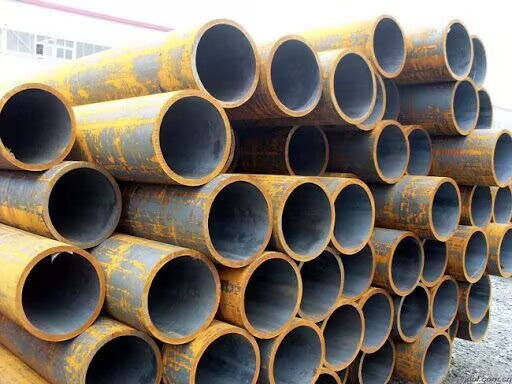Seamless carbon steel pipe rust removal refers to the removal of corrosion and oxides on the inner wall and surface through a series of physical or chemical methods without destroying the matrix of the pipe, in order to restore or improve the finish of the inner and outer walls, and ensure the subsequent use and coating quality of the pipeline. Today I will share with you the knowledge of seamless carbon steel pipe rust removal, which will also explain the technical requirements of seamless carbon steel pipe.

Carbon steel pipe is one of the most common and widely used seamless steel pipe materials. Its main components are carbon and iron, containing a small amount of manganese, sulfur, phosphorus and other elements. Carbon steel pipe has good plasticity, toughness and weldability, but poor corrosion resistance. For seamless carbon steel pipes without coating protection, corrosion and rust on the inner and outer walls often occur. There are many ways to solve this problem, and the common ones are: mechanical rust removal, chemical rust removal, electrochemical rust removal and so on.
Mechanical derusting
Mechanical derusting is mainly a method of mechanical derusting of seamless carbon steel pipes:
Mechanical grinding and shot blasting: Using a polishing machine, grinder or shot blasting machine, through high-speed rotating grinding wheels or steel balls, the surface rust layer is knocked off. This method of rust removal is efficient, suitable for large area treatment, and can clean surface defects at the same time.
Sandblasting: Using special sandblasting equipment, the fine sand is sprayed to the pipe wall at high speed, and the rust layer is removed by the impact force of the sand. High efficiency, suitable for large area rust removal inside and outside walls, and the surface roughness after treatment is moderate, which is conducive to the adhesion of the anti-corrosion coating in the later stage.
Chemical rust removal method
Pickling: The pipe surface is treated with a diluted solution of sulfuric, hydrochloric or phosphoric acid to dissolve the corroded layer through a chemical reaction. It should be noted that the pickling concentration and soaking time should be reasonably controlled to avoid excessive corrosion of the substrate. After pickling, it is necessary to rinse fully with water and neutralize, usually using lye.
The use of pickling can completely clean the rust layer, suitable for deep rust removal, the disadvantage is that strict chemical management and safety protection measures are required, and the waste liquid generated in the treatment process needs to be properly handled.
Alkali washing: For some special rust cases, alkaline cleaning agents can be used to dissolve the rust deposits and neutralize the acidic residues. Suitable for acid-sensitive environments, reducing the risk of acid treatment.
Commercial rust remover: There are specialized rust remover products on the market, such as phosphoric acid rust remover, corrosion inhibitor, etc. These products usually contain complex chemical components that can both dissolve rust and form a protective film to a certain extent.
Electrochemical rust removal
Through the carbon steel tube as the
cathode, with the appropriate
electrolyte (such as dilute hydrochloric acid or sulfuric acid solution), under the action of direct current, the surface rust layer is reduced and fell off. This method can gently remove the rust layer and reduce the erosion of the substrate. Suitable for precision equipment.
In summary, the selection of appropriate rust removal methods should be considered according to the specific situation of the steel pipe, the degree of rust and the construction environment. After rust removal, it is recommended to carry out anti-corrosion treatment on the steel pipe, such as brushing
anti-corrosion coating or lining anti-corrosion materials to extend its service life.
